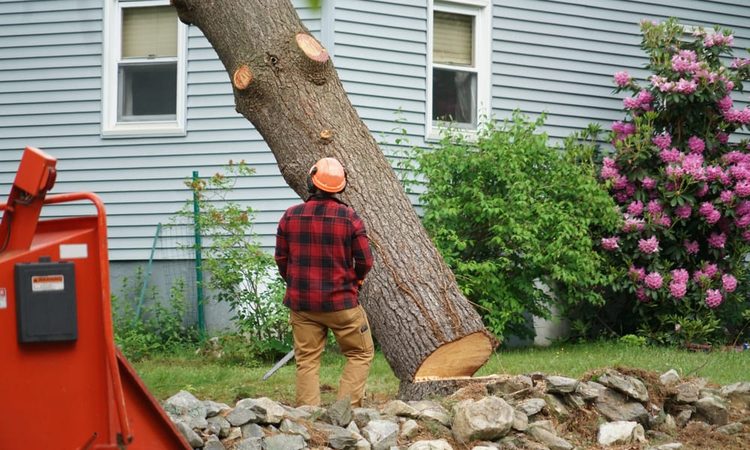Stump Grinder: Compact Power for Construction and Landscaping in 2025
A stump grinder brings professional stump removal into tight residential and urban spaces where larger machines cannot maneuver. In 2025, compact grinders pair powerful cutter wheels with stable tracked or wheeled chassis to chip hardwood stumps quickly, protect lawns with low ground pressure, and navigate gates and side yards. Crews rely on them after tree removals, storm cleanups, and landscape redesigns to eliminate tripping hazards, prevent regrowth, and prepare ground for new plantings

Tree stump removal has evolved significantly with the development of specialized grinding equipment designed for efficiency and precision. Professional contractors and property owners increasingly rely on these machines to clear land, improve aesthetics, and prepare sites for new construction or landscaping projects. The technology behind modern stump grinding equipment continues advancing, offering improved performance and reliability for diverse applications.
What Is a Stump Grinder?
A stump grinder is a specialized piece of equipment designed to mechanically remove tree stumps by grinding them into small wood chips. The machine uses a rotating cutting wheel equipped with sharp carbide teeth to systematically reduce stumps below ground level. Unlike traditional removal methods that involve digging or chemical treatments, stump grinders work by incrementally cutting away wood material until the entire stump and major root system are eliminated. These machines come in various sizes, from compact walk-behind units suitable for residential use to large self-propelled models designed for commercial forestry operations. The grinding process produces wood chips that can be used as mulch or easily disposed of, leaving the area ready for replanting or construction.
Key Features and Specifications
Modern stump grinding equipment incorporates several critical components that determine performance and usability. The cutting system typically features a heavy-duty steel wheel ranging from 13 to 35 inches in diameter, depending on the machine size. Carbide-tipped teeth mounted on the wheel provide the cutting action, with tooth configuration varying based on intended applications. Engine power ranges from 13 horsepower for compact residential units to over 100 horsepower for large commercial models. Track or wheel configurations affect mobility and ground pressure, with tracked units offering better stability on uneven terrain. Control systems have evolved to include joystick operation, allowing precise movement and cutting depth adjustment. Safety features include operator protection screens, emergency stops, and blade guards. Many models offer remote control operation, enabling operators to maintain safe distances during operation while maintaining full machine control.
Benefits of Using a Compact Stump Grinder
Compact stump grinding equipment offers numerous advantages over traditional stump removal methods and larger machines. Size efficiency allows these units to access tight spaces, backyard areas, and locations where larger equipment cannot operate effectively. Reduced ground disturbance minimizes landscape damage, preserving surrounding vegetation and hardscaping features. Operating costs remain lower compared to hiring specialized removal services or renting heavy excavation equipment. Time efficiency significantly improves project completion, with most residential stumps removed within 30 minutes to two hours depending on size and species. Versatility extends beyond stump removal to include root cutting, land clearing, and trail maintenance applications. Environmental benefits include recycling wood waste into usable mulch rather than disposal in landfills. Operator training requirements are minimal compared to larger machinery, making these units accessible for property maintenance staff and landscape professionals.
Common Applications
Stump grinding equipment serves diverse applications across residential, commercial, and municipal sectors. Residential property maintenance includes removing stumps from storm damage, landscape renovations, and property development projects. Commercial landscaping operations utilize these machines for site preparation, park maintenance, and golf course management. Construction projects require stump removal for foundation work, utility installations, and site clearing operations. Municipal applications include street tree maintenance, park development, and right-of-way clearing. Agricultural uses encompass orchard renovation, fence line clearing, and pasture improvement projects. Utility companies employ stump grinders for vegetation management along power lines and pipeline corridors. Environmental restoration projects benefit from selective stump removal while preserving surrounding ecosystems.
| Equipment Type | Provider | Cost Estimation |
|---|---|---|
| Walk-Behind Grinder | Bandit Industries | $8,000 - $15,000 |
| Self-Propelled Compact | Vermeer | $25,000 - $45,000 |
| Track Unit | Rayco | $35,000 - $65,000 |
| Rental Daily Rate | United Rentals | $200 - $400 |
| Professional Service | Local Tree Services | $75 - $150 per stump |
Prices, rates, or cost estimates mentioned in this article are based on the latest available information but may change over time. Independent research is advised before making financial decisions.
Maintenance and Longevity
Proper maintenance practices significantly impact stump grinder performance and operational lifespan. Daily maintenance includes checking engine oil levels, inspecting cutting teeth for wear or damage, and cleaning debris from cooling systems. Cutting teeth require regular sharpening or replacement based on usage intensity and material hardness. Engine maintenance follows manufacturer specifications for oil changes, air filter replacement, and spark plug service. Hydraulic systems need periodic fluid changes and filter replacement to maintain optimal performance. Track or wheel bearings require regular lubrication and inspection for wear. Storage practices should include cleaning, fuel stabilization, and protection from weather exposure. Preventive maintenance schedules help identify potential issues before they result in costly repairs or downtime. Professional servicing annually ensures all systems operate within specifications and safety standards are maintained.
Stump grinding technology continues evolving with improvements in engine efficiency, cutting system design, and operator comfort features. Understanding equipment capabilities, maintenance requirements, and application suitability helps ensure successful stump removal projects while maximizing equipment value and performance over time.




